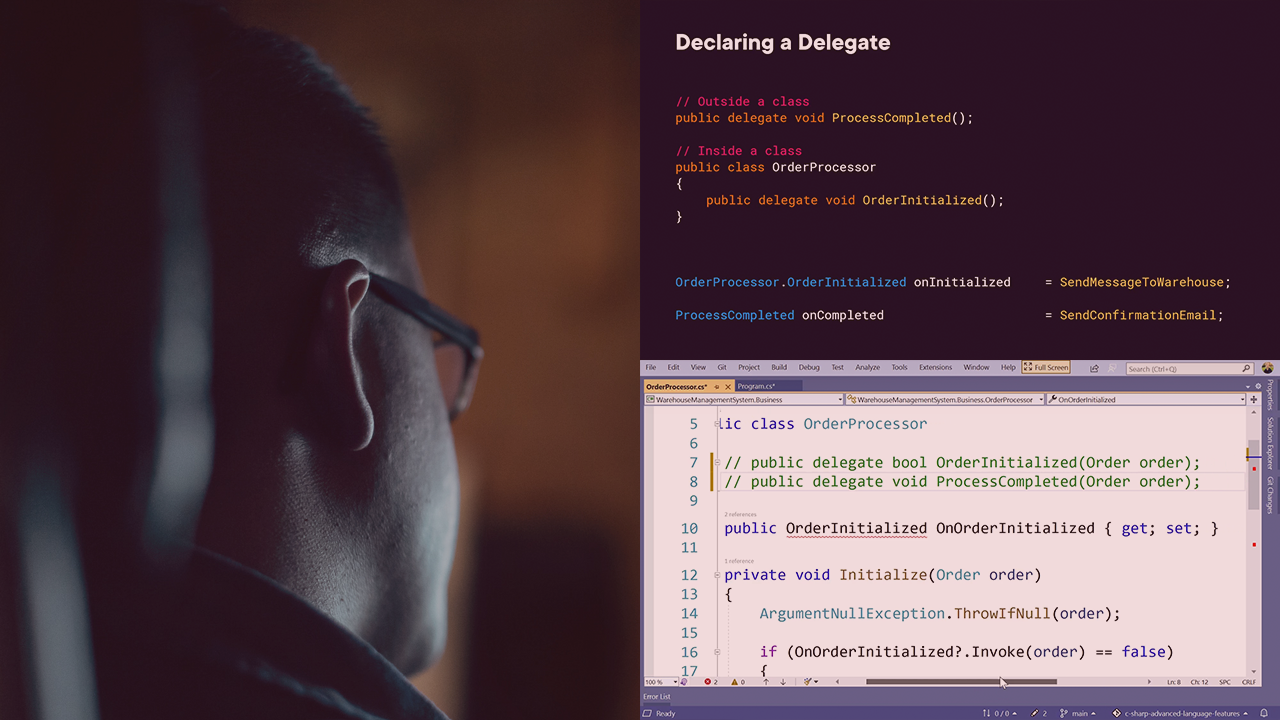- Course
C# Advanced Language Features
Learn how to best use the advanced language features of C#. This course will teach you how to apply each of them in a real application, as well as where they are best suited.

- Course
C# Advanced Language Features
Learn how to best use the advanced language features of C#. This course will teach you how to apply each of them in a real application, as well as where they are best suited.
Get started today
Access this course and other top-rated tech content with one of our business plans.
Try this course for free
Access this course and other top-rated tech content with one of our individual plans.
This course is included in the libraries shown below:
- Core Tech
What you'll learn
Creating an application that best uses the language features of C# can be tricky, especially when you introduce the advanced features for example lambdas, delegates, pattern matching and record types. In this course, C# Advanced Language Features, you’ll learn how to best approach the advanced language features of C#, to take your application development to the next level. First, you’ll explore each language feature to understand how it works, and where it has its place in your applications. Next, you’ll discover the best practices around using the language feature. Finally, you’ll learn how to combine one, or more of the language features as you progress throughout the course. When you’re finished with this course, you’ll have the skills and knowledge of building applications that use advanced language features in C# needed to build power, real-world applications.

